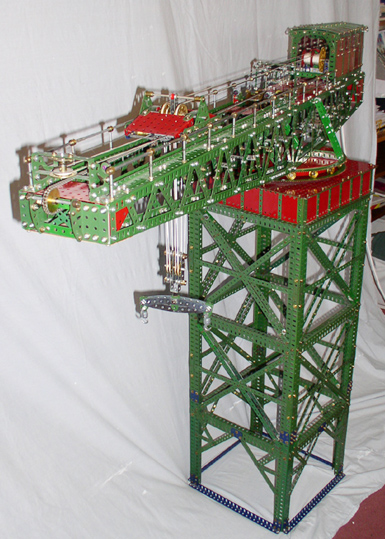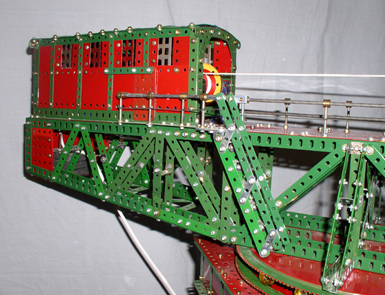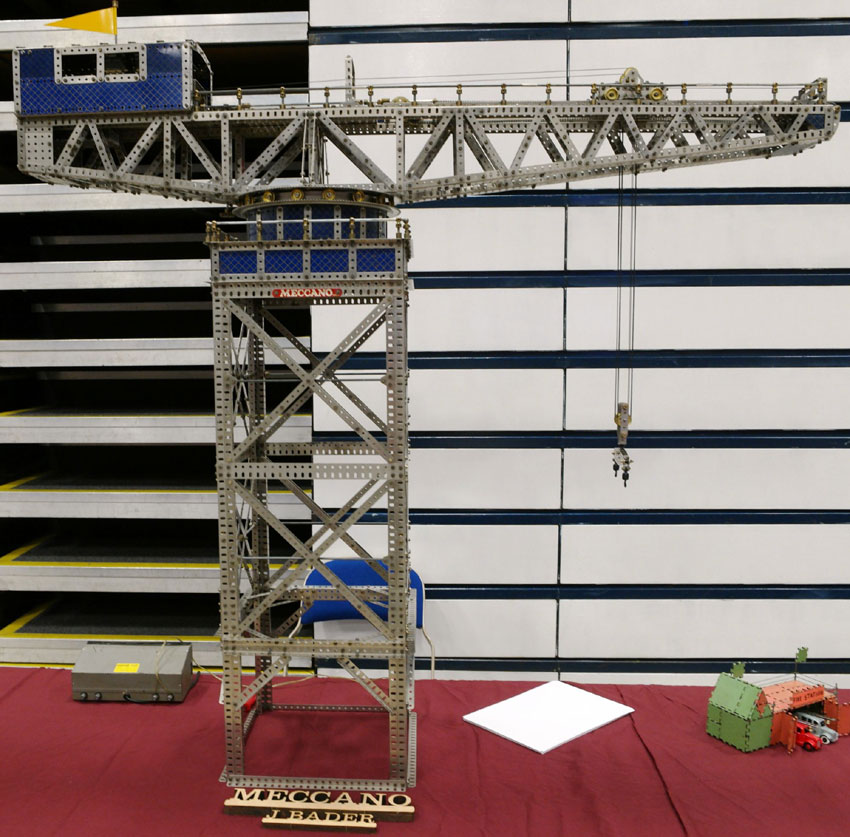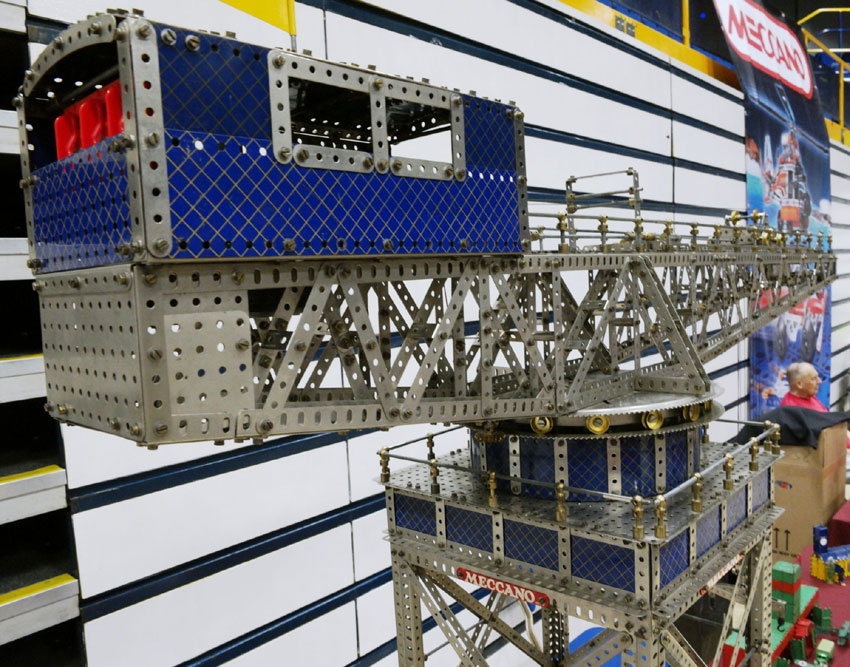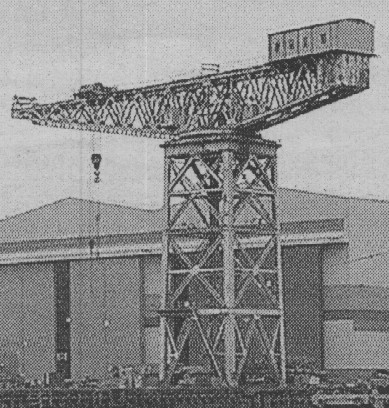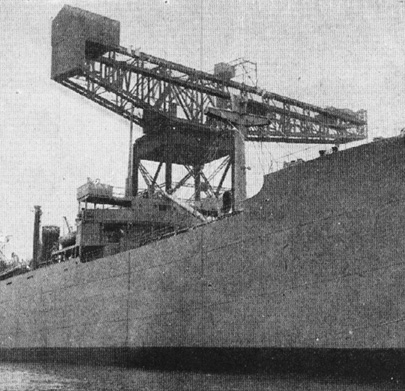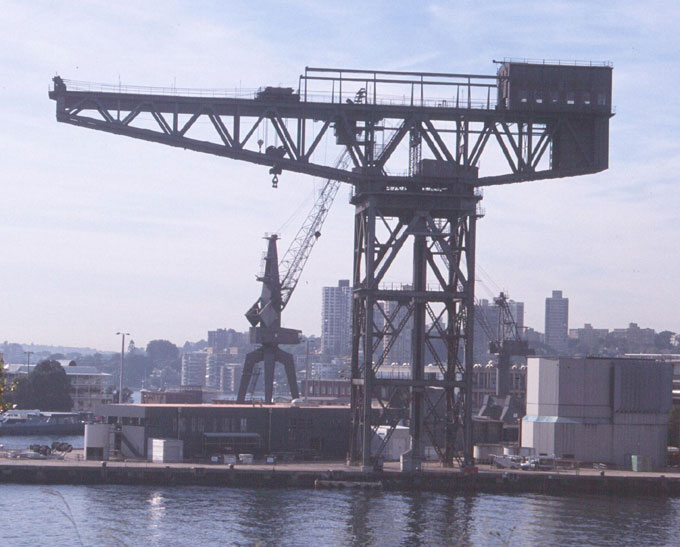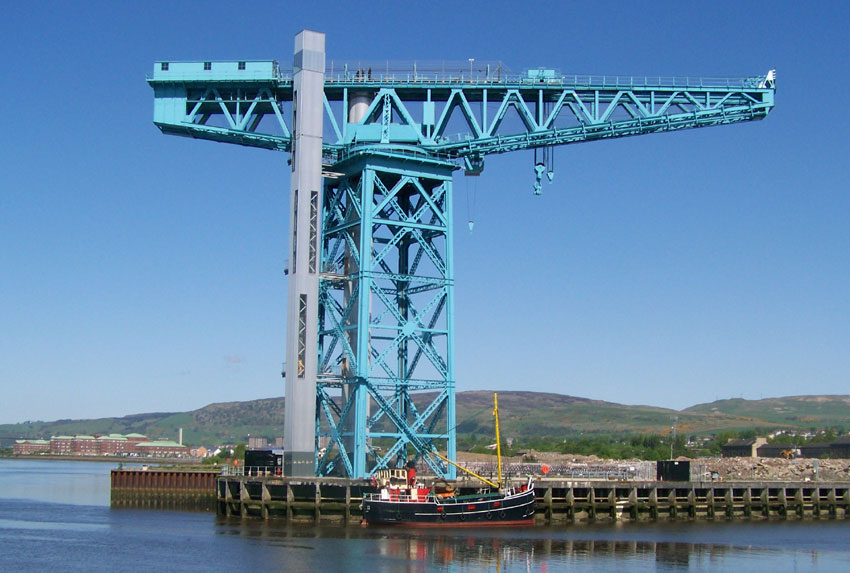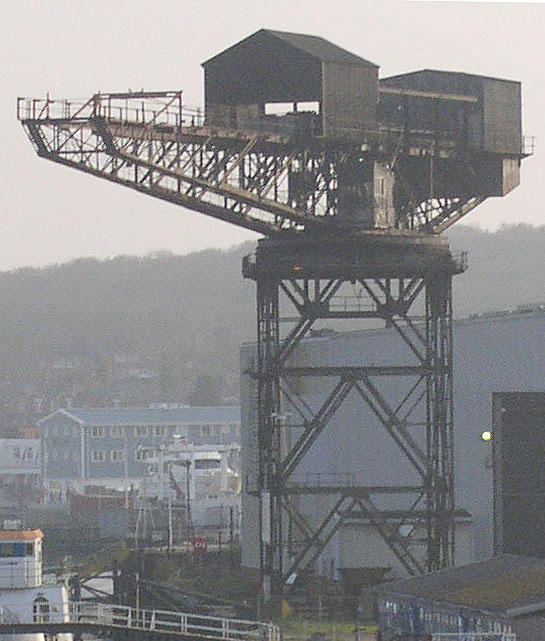
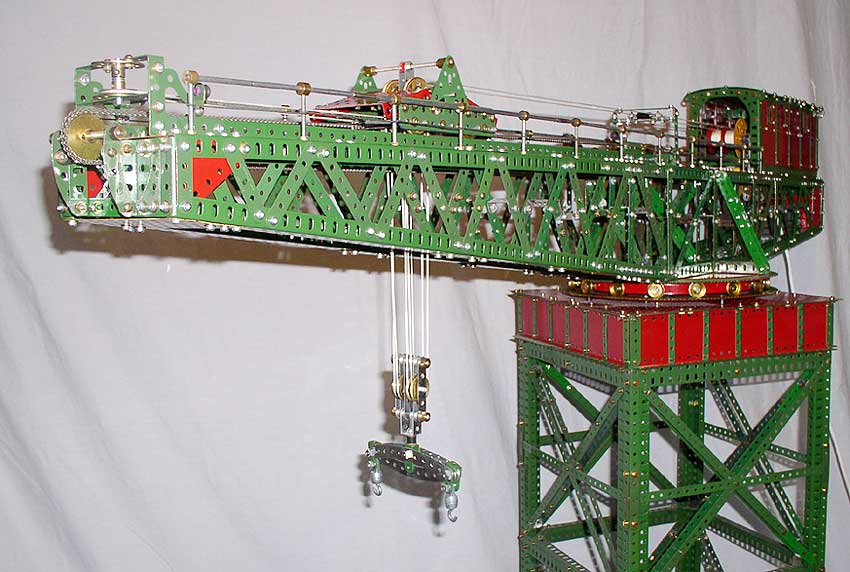
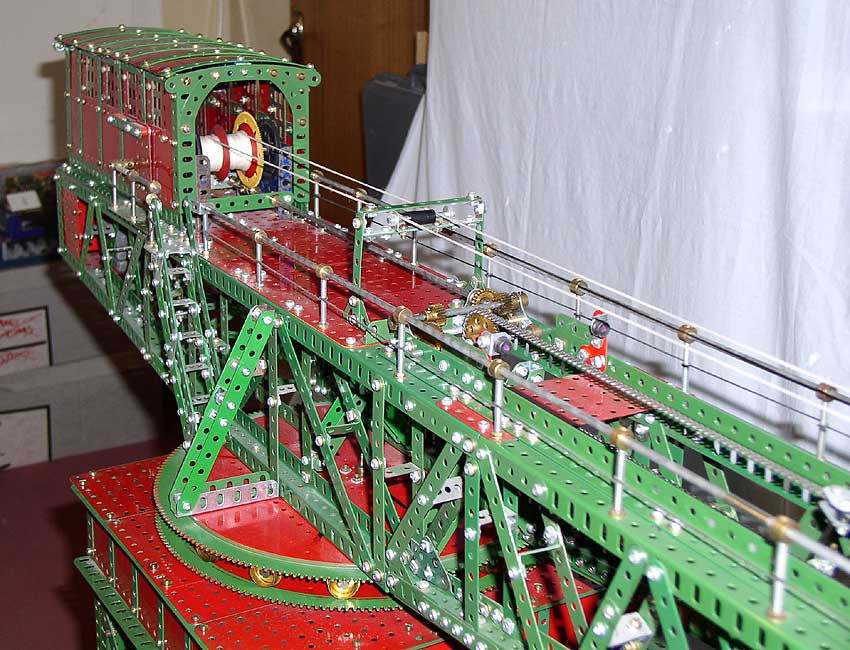
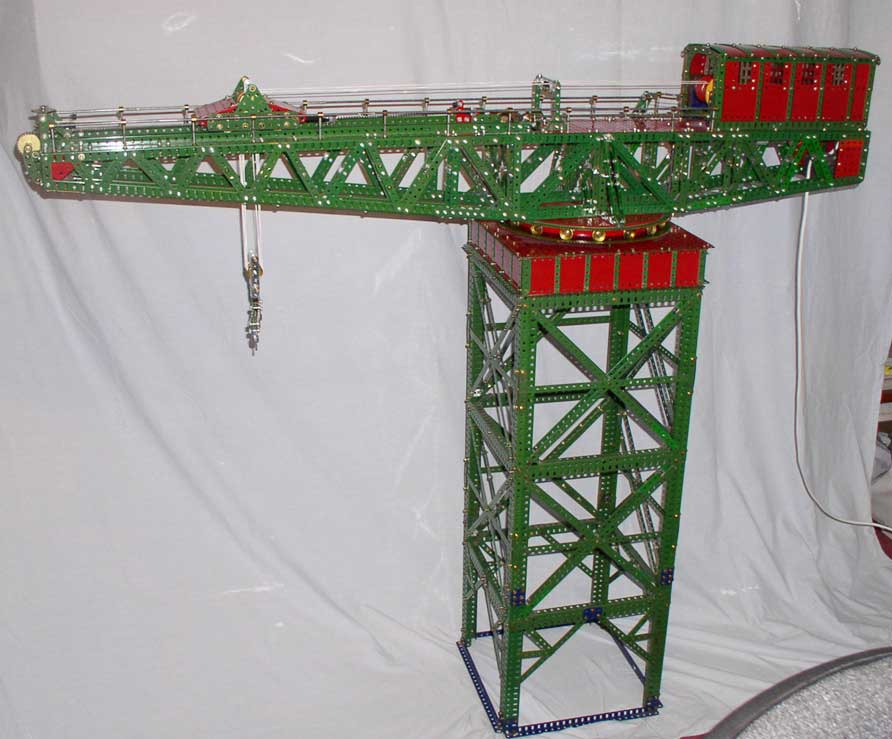 |
The SML model is one of only a handful of designs Meccano published that used part no. 167 the Geared Roller Bearing (G.B.R.). The name was rather a misnomer as the bearings are flanged wheels and not rollers. This was the largest and most expensive part produced by the company. Introduced in 1928 it was never a big seller, priced at £1.00 it was a very expensive part. Most of the published plans using the G.B.R. were in fact reworking of models designed earlier that used a roller bearing made up from part No. 119 channel segment. Production of the G.B.R. ended with wartime regulations in 1941 along with that of all other Meccano products. The G.B.R. was unfortunately not in the range of parts when production resumed in 1945. The one I used on the crane is a modern reproduction made by Ashok Banerjee and finished in 1950s red and green. I did intend when I started construction to build the model as illustrated but decided the design of the boom was too simplistic compared to the prototype cranes. In fact the "L outfit" had many more parts than the instructions used and a much better model could have been designed.
My model is not a scale model but based on the proportions of the original Meccano model and various pictures of the original cranes. I also used the basic design and construction of the boom from Bert Love's Electric Dockside Crane published in The Meccano Magazine, in two parts, July and October 1978. The main difference being I continued the double bracing throughout the entire length of the boom the original crane was designs to built with the parts in the Number 10 set. The boom is balanced with 1.5 kg. of cast lead weights. The model is driven by three electric motors, one for each of the movements, Slewing, hoist and crab trolley. Again I followed Bert's design for the hoist and trolley. The slewing movement is driven by a Swiss Escap motor with built in reduction gearing driving directly through connecting drive shafts to the spur gear rotating around the geared roller bearing. The motive power of the original cranes would also have been electric motors. My friend and fellow member of the Sheffield Meccano Guild John Bader has built his version of my crane using original 1920's nickel and blue gold cross hatched parts. The model is shown below and gives a good idea of the size of the model. The picture was taken at The Skegness International Meccano exhibition July 2015. Photographs courtesy of Malcolm Hanson.
The prototypes of this type of crane were built between the 1900s - 1970s and can still seen be at naval dockyards and ship builders around the world. Although referred to as "Hammer Head Cranes" the more correct term should be a "Giant Cantilever Crane". There are or were fine examples on Clydeside, Cowes, Halifax Nova Scotia and Sydney Australia. They were designed to be used for very heavy lifting during the fittingly out and repair of large ships. Many of the cranes were capable of lifts of over 250 tonnes. Their use was some what restricted as they were built in a fixed position on the dock side. The black and white picture (above left) is the Govan shipyard crane when built in 1911it was the largest crane of its type in the world. Until very recently there were five of these magnificent cranes still existing on the banks of the Clyde. Unfortunately the Govan crane was dismantled in 2007 by the owners of the yard BAE Systems, despite having a grade A listing. I guess you cannot keep every old crane, at least the yard still builds ships. The picture (above right) is from a wartime publication "Britain's Merchant Navy" circa 1943 and shows a hammer head crane at a fitting out yard where pre-fabricated (Liberty) ships were assembled.
The photograph above is of the 250 tonne hammer head crane at the Captain Cook dry dock in Sydney. The crane took six years to build and was completed in 1952. The main boom is 83 metres (273 ft.) long. The tower is 43 metres (141 ft.) high from dockside to the underside of the boom and is 15.25 metres (50 ft. ) square. The tower rests on foundations 27.4 metres (90 ft.) below the sea bed. During the trial erection, the cantilever boom was assembled upside down this was done to avoid the great deal of shoring that would have been necessary because of the tapering of the cantilever. I built the boom in the same way on my model. I shot the picture in the early morning of March 19 2002 on the first day of an Australian holiday. Regrettably in 2014 the crane was demolished due to the Navy ordering two large Amphibious Assault Ships, HMAShips Adelaide and Canberra, and it was realised that given the extreme height and overhang of the flightdecks of these ships, they would have been unable to berth alongside without danger of fouling the crane, which had been out of use for many years. So the hotly-debated decision was made for demolition. the latter information was given to me by a Meccano enthusiast and former member of the Australian Navy. Below is the Titan crane of the former John Browns shipyard on the Clyde. The crane came into use on 24 April 1907. The boom has a length of 73 metres (240ft.) and stands 46 metres high (150 feet). Its huge lifting capacity originally 150 tons was increased to 200 tons in 1943 was one of the reasons for success of John Browns in winning orders for large ships.The crane's restoration was completed in 2007 and is now open to the public, for more information Visit the web site for the Titan.
The crane on the left is the 80 ton crane at Cowes on the Isle of Wight. The crane was designed and engineered by Babcock and Wilcox in 1911 and was the only crane of this type they ever built. It is one of the earliest cranes of this type still existing. I took the photograph in the late afternoon of April 2005. For more information about The Cowes Giant Cantilever Crane click here. |
The completed Meccano crane pictures were taken January 21 2004 page revised October 10 2022
|
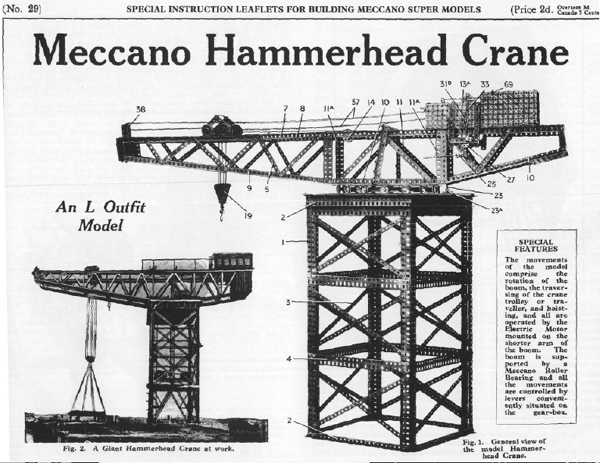 This model is very loosely based on the Meccano Super Model leaflet Number 29 published in 1934, the cover of which is shown on the left . The plans had originally been published in the December 1925 Meccano magazine,this version used channel segments and large flanged wheels for the bearing.
This model is very loosely based on the Meccano Super Model leaflet Number 29 published in 1934, the cover of which is shown on the left . The plans had originally been published in the December 1925 Meccano magazine,this version used channel segments and large flanged wheels for the bearing. 